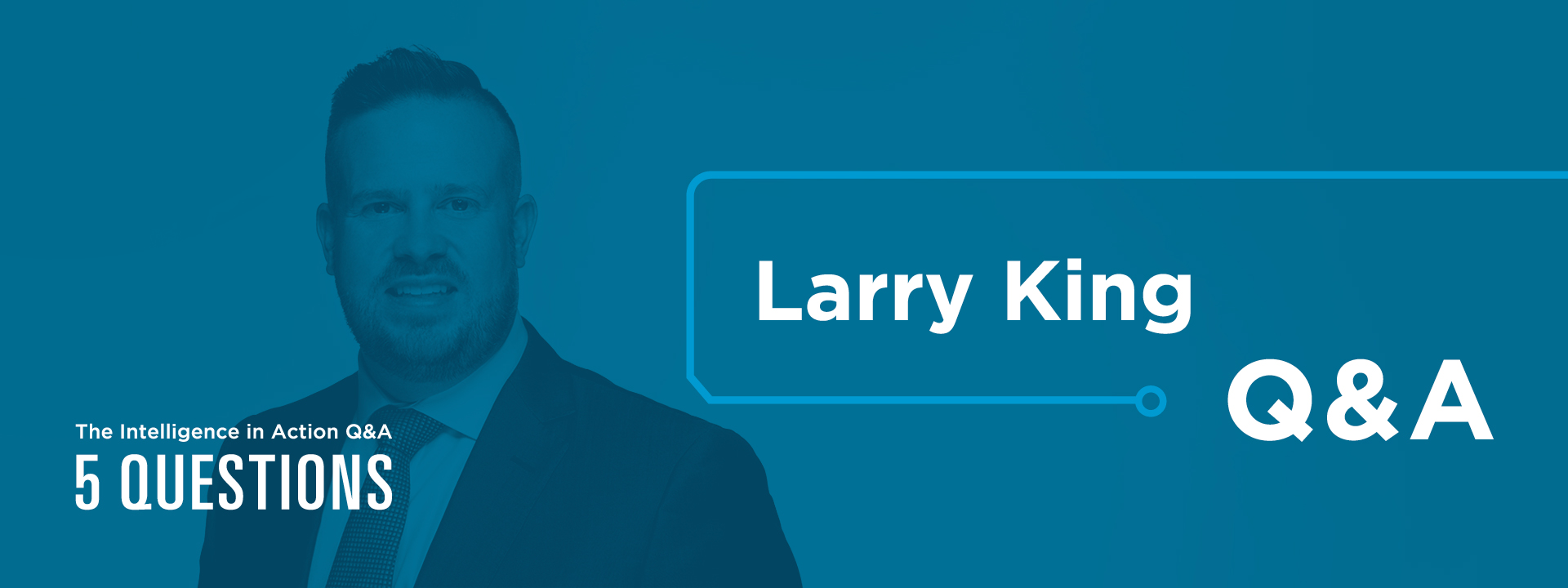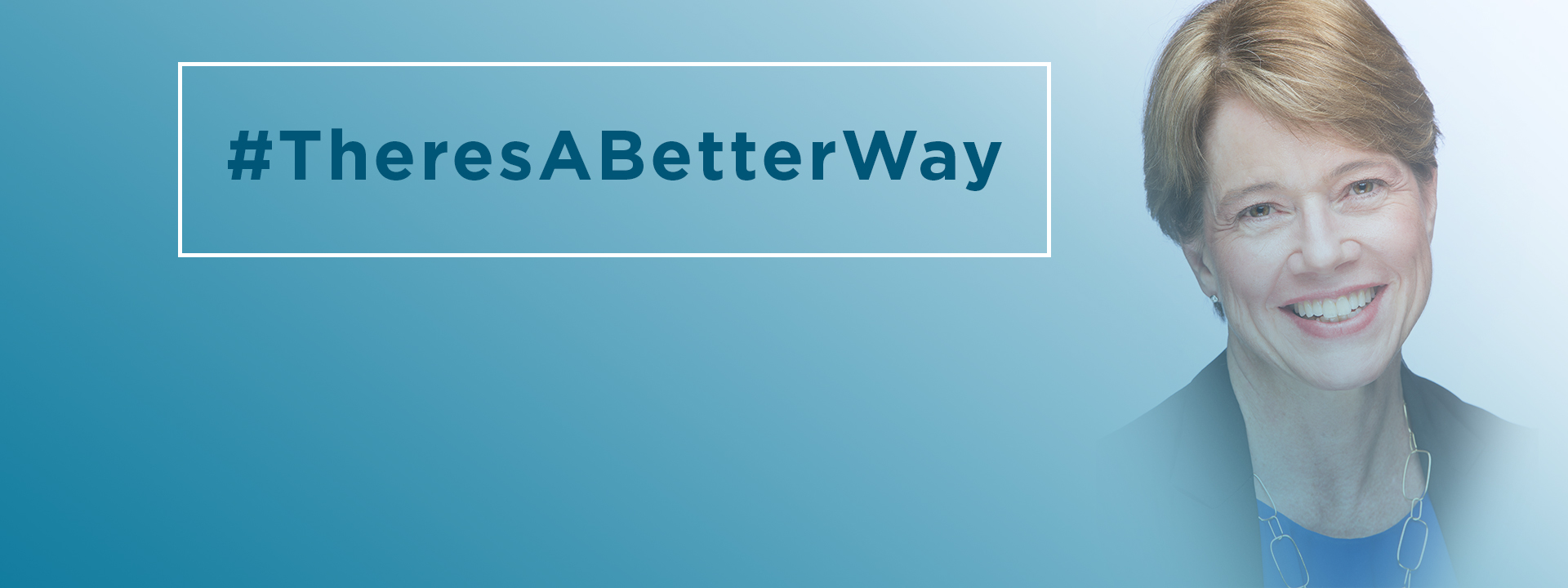Larry King, Surescripts Manager of Clinical Informatics, understands the demands pharmacists are facing.
From his days as a retail pharmacist back in Brooklyn, to his office in downtown Minneapolis, Larry brings his pharmacy and clinical expertise to the table—the one at which every major healthcare player has a place.
Larry helps lead the Surescripts Critical Performance Improvement (CPI) program where representatives from electronic health records (EHR) vendors, pharmacies, pharmacy benefit managers (PBMs), heath plans and health systems come together in the name of prescription accuracy.
It’s not easy, but for the ultimate beneficiary of his work—the patient—it’s well worth it. In fact, Larry has a soft spot for patients—even those who joked about his name. Thanks to his unwavering east coast work ethic and picking up just the right amount of “Minnesota nice,” being Larry King was just another way to connect.
1. How would you talk about prescription accuracy at a cocktail party?
This one’s easy. The details behind the work we do are incredibly hard. We’re talking NDC, RxNorm, Potency Unit Code—those terms aren’t easy to understand outside of healthcare. But if I asked an average patient why prescription accuracy is important, they’d get it—healthcare background or not.
For the CPI team, it’s about two things. Number one is that we increase patient safety with everything from the right dose, to the right potency, to the right directions and beyond.
The second piece is process improvement. How do we make sure that when prescription data is sent to a pharmacy, the pharmacist has less work, less phone calls back to the doctor and less faxes—all things that take them away from interacting with patients and consulting on medications?
2. When you sit down with colleagues who are working to improve prescription accuracy, what topics or trends are you talking about lately? What are you excited about?
Obviously, in our world right now, NCPDP SCRIPT v2017071 is the topic that leads all of our conversations.
But I’m most excited to talk about new areas in electronic prescribing that we’re going to see used across the network. CancelRx and RxChange are two ways that we’re really starting to connect the provider and the pharmacy. In my past life, it was send a fax or pick up the phone, and now pharmacists are able to do that electronically.
Think about how much better that conversation goes when a doctor can say, “Hey, I heard back from your pharmacy that this didn’t work out for you. Was there a delay filling it? Was it too expensive? Are you concerned about side effects?”
It opens up so many conversations to understand the barriers to treatment. And it creates an environment where the doctor, pharmacist and patient can work together on addressing them.
3. What was your first healthcare role? What did it teach you?
I was a pharmacy intern at Eckerd’s, which became Rite Aid. It was about getting behind a retail pharmacy bench—that first sink-or-swim moment of my professional career where I was figuring out how to actually be a pharmacist after studying it. I had a mentor who understood that people often don’t know the difference between an intern and a pharmacist, so his expectation was always, “You need to be at the same level as the pharmacist.” I thought, “How do I portray that level of confidence when I’m still in school?”
My entire retail pharmacy experience was in New York City as an intern in Queens, and then as a pharmacist in Brooklyn. Serving customers spanning the entire socioeconomic spectrum challenged me in ways I didn’t expect—not necessarily in terms of clinical judgment, but how do I meet a patient where they are? The clinical side is always a learning curve, but I felt relatively well prepared there.
The unexpected surprises were more about the pressures on the retail pharmacist. It’s the stuff they can’t teach you in school. I asked myself, “Am I cut out to handle people’s daily lives?
People usually don’t come to the pharmacy in a happy place. You’re never there because everything’s good in your life. So it’s about positively impacting them in a very short amount of time, and often under poor circumstances.
4. Who or what inspires you?
People inspire me, particularly those with a few key characteristics.
First, I admire people who are passionate like me. When I get into an area that’s important to me, it’s all or nothing. It’s critically important to pour yourself into what you’re working on, whether that’s patient care or prescription accuracy and the data behind the healthcare system. People who see this work as an opportunity to improve the lives of virtually every American—those are my people.
The next thing is transparency. I look at our relationships with our customers and I see transparency as an opportunity to gain respect. It doesn’t always lead to the easiest conversations, but putting all our cards out on the table and having an honest dialog ultimately moves the needle in the right direction.
Lastly, I am inspired by people who can dig in and embrace hard work. The problems we’re fixing are complex, and the stakes are incredibly high. But we have to be willing to roll up our sleeves and find the right solution for the patient.
5. Imagine it’s 2029. What are you most proud of helping accomplish in healthcare?
I think of that “perfect prescription” as the achievement we’re all reaching for. So in ten years, we’ll be getting the correct prescription to the patient 100% of the time—no dispensing errors, no mistakes in the process—it’s scalable, repeatable and perfect. We’ll look back and see how we closed that gap by solving the issues out there, and we’ll have a closed system that works every time. This is not only the mission of the CPI program, but it’s also a goal our customers within the Surescripts Network Alliance are always 100% aligned behind.


 Dean Riggott Photography
Surescripts
Dean Riggott Photography
Surescripts




